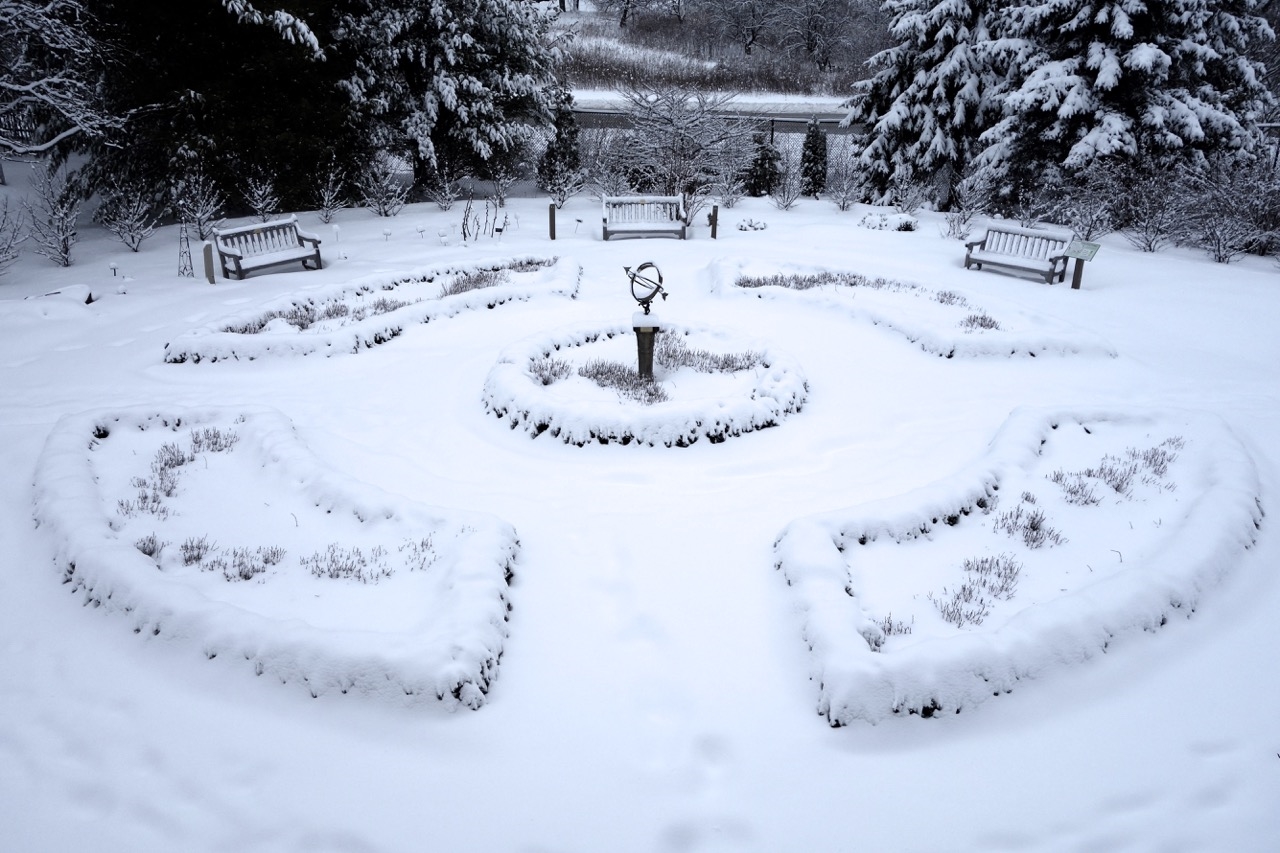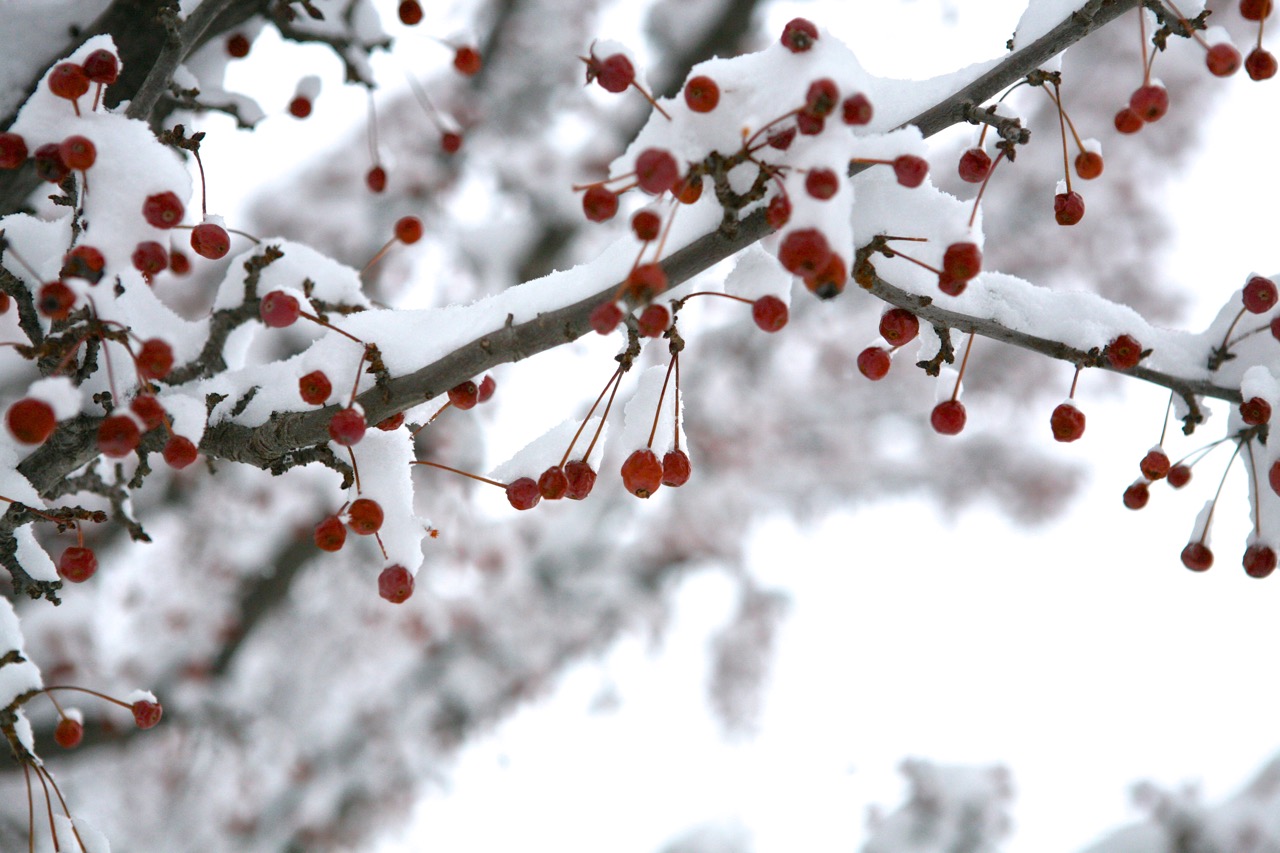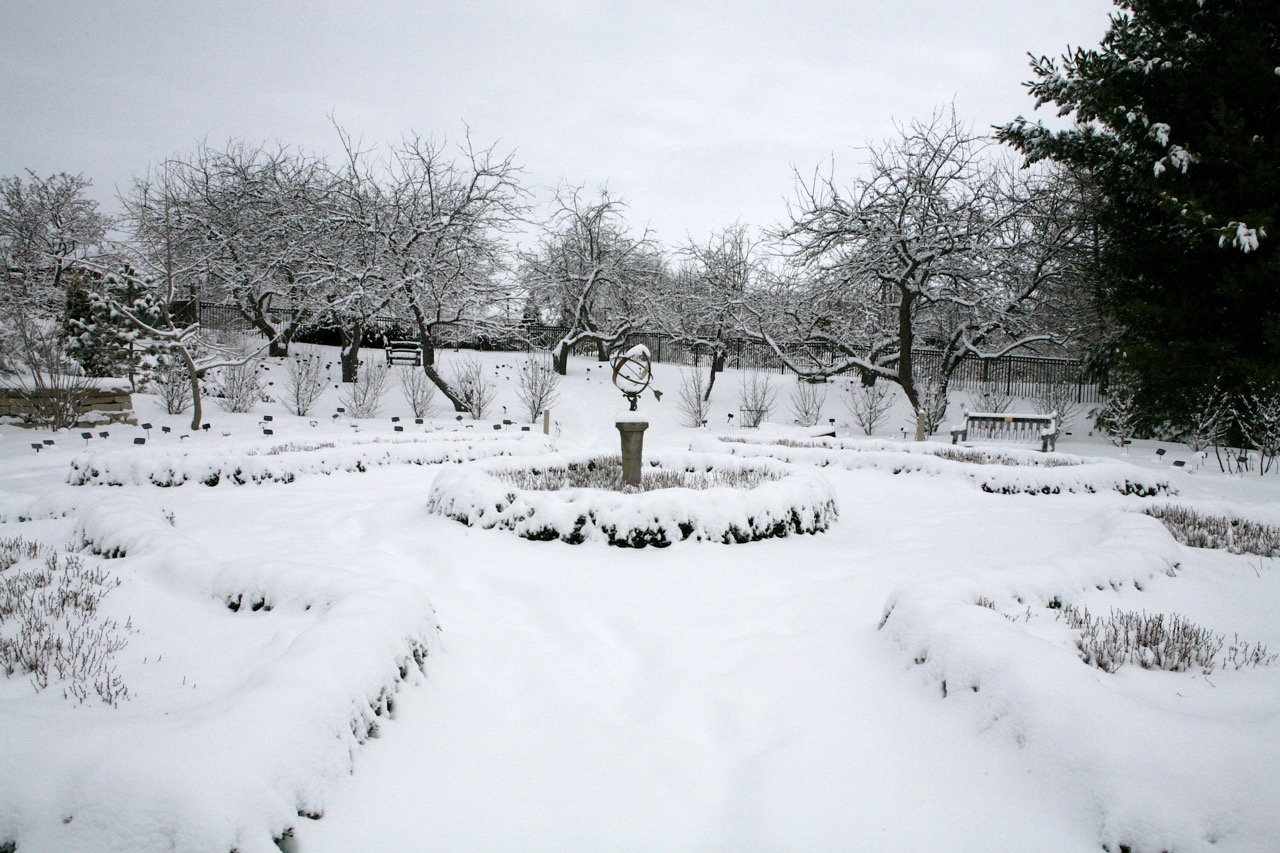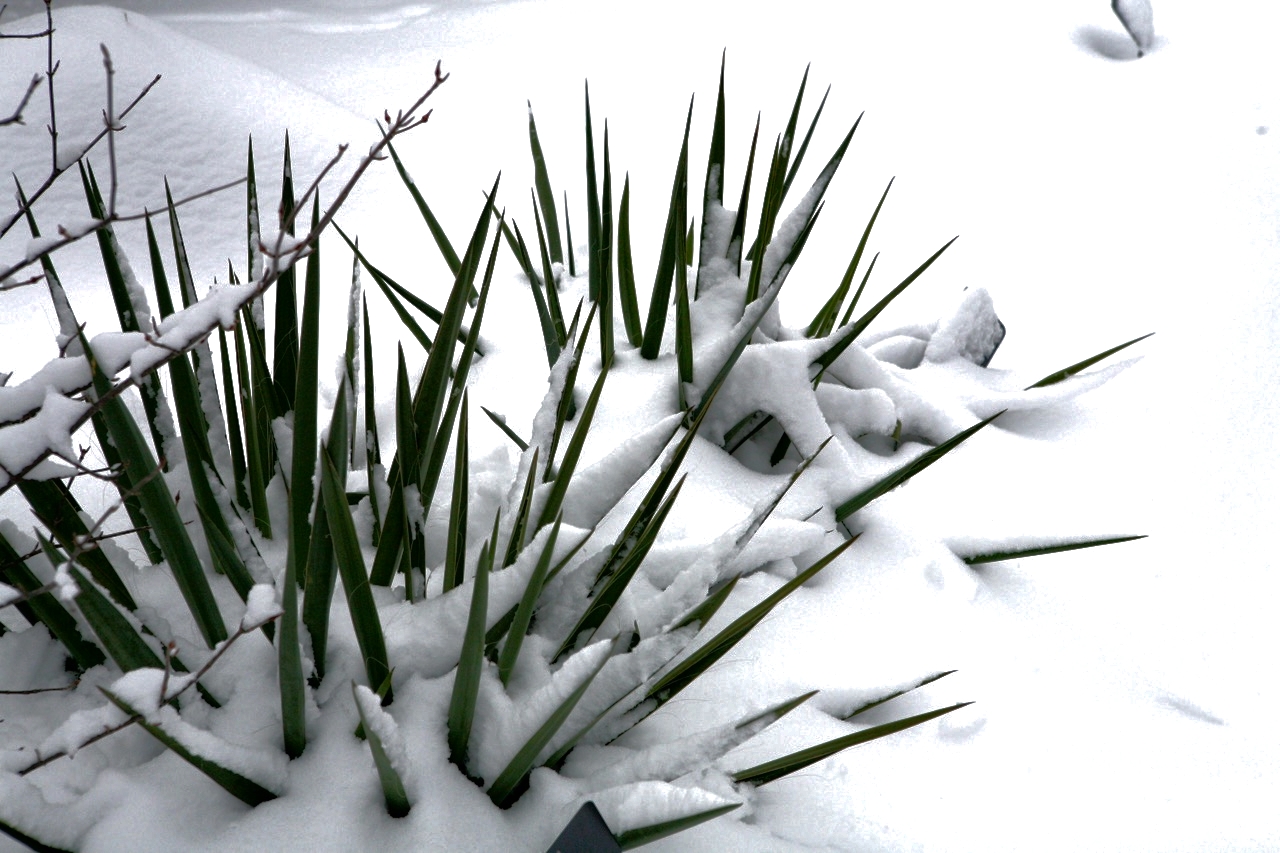Tudor England, a period that spanned 1485 to 1603, gave us William Shakespeare and English conquests in the New World. Rulers like Henry VIII and Elizabeth I made England a European power during these years.
The Tudor period also brought us the knot garden. Inspired by the geometry and repetition of Italian landscapes, designers placed these gardens in relation to the house so that they could be seen from above.
Interlacing plantings and materials of contrasting colors created patterns that also appeared in fashion, furniture, and architecture.
Blocks of annual flowering plants add summer interest to the knot garden.
The Green Bay Botanical Garden has a delightful modern knot garden made of green velvet boxwood and barberry. A crushed stone path provides contrast and invites exploration; concrete edging keeps the design clean. An armillary sphere provides a map of the constellations, and anchors the middle.
Mark Konlock, Director of Horticulture for the Green Bay Botanic Garden, explains the garden’s history, “Originally, we arranged patterns out of spring bulbs and annuals that required constant maintenance. As the Botanical Garden grew, we wanted to make a more permanent statement. So in 2011 we installed the current evergreen design that only requires pruning once per year. It also looks good in every season.”
Like a typical Tudor knot garden, this one lies on an axis to the formal Wellhouse. A viewing pavilion two stories high allows visitors to appreciate the design from above. “Before planting we laid out the pots and kept running up to check out the design from above until we got it just right,” Konlock explains. Because the stone path interrupts the pattern, it’s fun to think of how the loops connect. Many traditional Tudor knot gardens were also built as puzzles.
The old Larsen Orchard remnant reminds us of a prior use for this land and leads to the knot garden. It provides a wonderful contrast to the formal Tudor style garden.
The location of this garden is intentional. Sited behind the Wellhouse, the garden “creates an element of surprise,” explains Konlock. “People enter the main garden from the Terrace and get to discover the herb garden when they enter the Wellhouse.” Once discovered, the garden can be accessed either through the old Larsen Orchard or by walking through several other garden areas.
The knot garden at the Green Bay Botanical Garden looks good all year long. During my recent winter visit, the garden was a ghost of itself. Under a blanket of fresh snow, its design barely visible. In the late fall and early spring, the simple box and barberry design stands out. In spring and summer, the spaces between the knots are filled with annuals that add another pop of color. Though Konlock advises caution, because annuals too close to the hedges can keep them from looking their best.
Benches are built into the design to encourage visitors to sit and enjoy. “This is part of the Herb Garden which is full of plants to touch, rub, and smell.”
Autumn provides the best time to see the architecture of the garden.
The Green Bay Botanic Garden is relatively young; it opened to the public in 1996. Its 47 acres capture the beauty of Northeast Wisconsin.
The property, known as “the old Larsen orchard,” was assembled by William Larsen in the early 1900's to grow apples for his wholesale fruit and vegetable business. In the 1970’s a group called Plants in the Urban Environment began the work that eventually led to the creation of the botanic garden. This acreage lies on land that was once part of the Oneida Indian Reservation.
Don’t miss a visit to this wonderful garden any time of year.
When you are ready to create your own Tudor knot garden, check out William Lawson's A New Orchard and Garden. Written in the early 1600's, his book includes traditional patterns.














